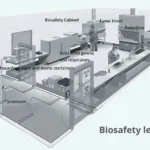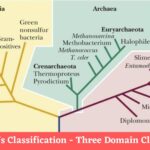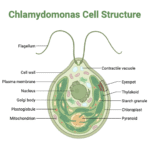Basic Microbiology 12 Views 1 Answers
Sourav Pan🥇 GoldSeptember 4, 2024
What is the role of Mucosal-Associated Lymphoid Tissue (MALT) in host defence?
What is the role of Mucosal-Associated Lymphoid Tissue (MALT) in host defence?
Please login to save the post
Please login to submit an answer.
Sourav Pan🥇 GoldMay 15, 2025
Mucosal-Associated Lymphoid Tissue (MALT) plays a crucial role in the host defense system, particularly at mucosal surfaces where the body interacts with the external environment. MALT is a part of the immune system that includes various lymphoid tissues associated with mucosal surfaces, such as the gut, respiratory tract, and urogenital tract. Here’s a breakdown of its roles:
1. Immune Surveillance
- Detection of Pathogens: MALT continuously monitors mucosal surfaces for the presence of pathogens, such as bacteria, viruses, and fungi. It is strategically positioned to detect and respond to invaders that enter the body through mucosal surfaces.
2. Induction of Immune Responses
- Activation of Immune Cells: MALT contains various immune cells, including lymphocytes (B cells, T cells), macrophages, and dendritic cells. These cells work together to recognize antigens, initiate immune responses, and produce antibodies and cytokines.
- Antigen Presentation: Dendritic cells in MALT capture antigens from the mucosal surfaces and present them to T cells, which is essential for the activation of the adaptive immune response.
3. Production of Secretory IgA
- Mucosal Immunity: B cells in MALT produce secretory immunoglobulin A (IgA), which is secreted into mucosal surfaces such as saliva, tears, and intestinal secretions. IgA helps neutralize pathogens and toxins, preventing them from adhering to and penetrating mucosal tissues.
4. Tolerance and Regulation
- Maintaining Homeostasis: MALT helps maintain immune tolerance to non-harmful antigens, such as food proteins and commensal microorganisms, preventing unnecessary inflammatory responses. This is crucial for preventing allergies and autoimmune diseases.
- Regulation of Immune Responses: MALT can modulate the strength and type of immune response to avoid excessive inflammation while ensuring effective defense against pathogens.
5. Local Immune Memory
- Generation of Immune Memory: MALT contributes to the formation of local immune memory. After an initial exposure to an antigen, MALT helps generate memory cells that can provide a rapid and effective response upon subsequent exposures.
6. Integration with Systemic Immunity
- Coordination with Systemic Immunity: MALT communicates with other components of the immune system. It plays a role in bridging local mucosal immunity with systemic immune responses, contributing to overall immune surveillance and protection.
Key Components of MALT
- Gut-Associated Lymphoid Tissue (GALT): Includes Peyer’s patches, isolated lymphoid follicles, and the appendix.
- Nasal-Associated Lymphoid Tissue (NALT): Found in the nasopharyngeal region.
- Bronchial-Associated Lymphoid Tissue (BALT): Located in the bronchi and lungs.
- Urogenital-Associated Lymphoid Tissue (VALT): Found in the urogenital tract.
0
0 likes
- Share on Facebook
- Share on Twitter
- Share on LinkedIn




